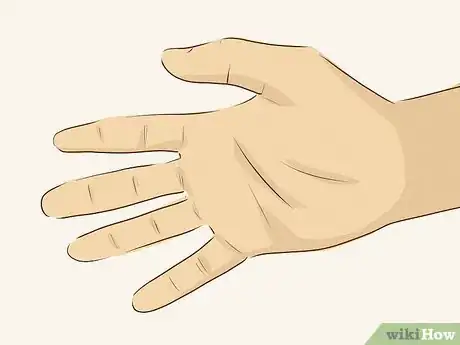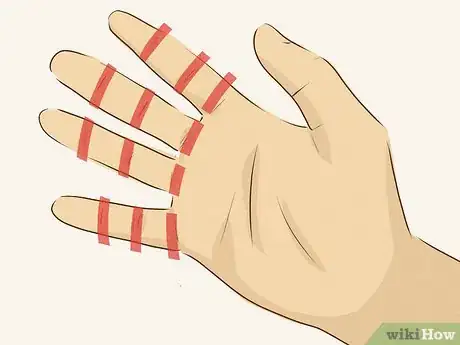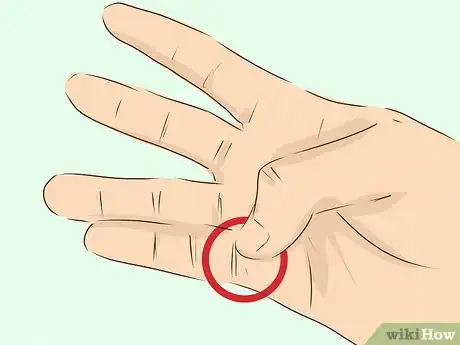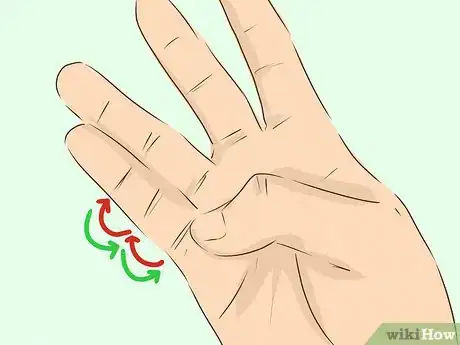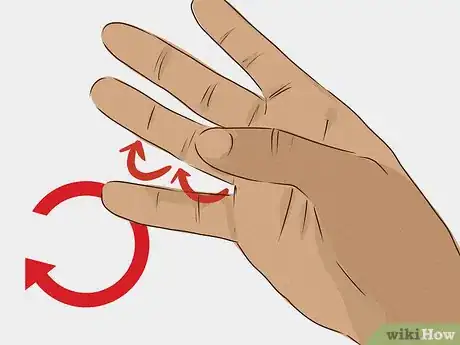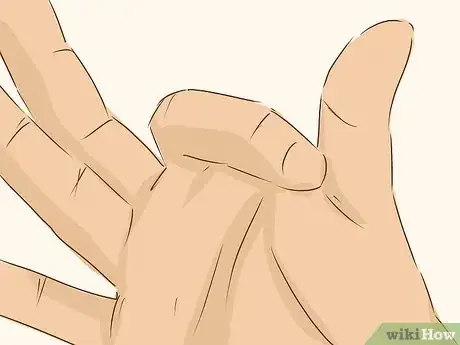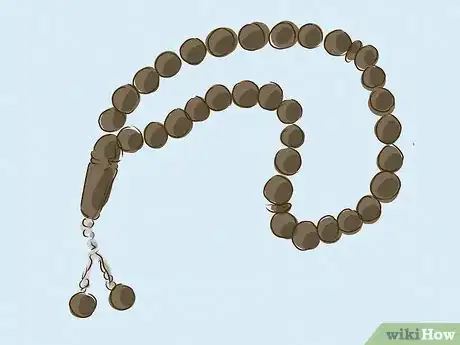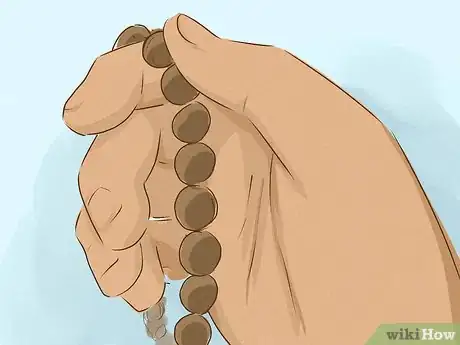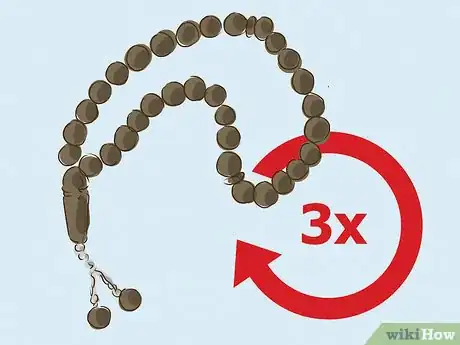This article was co-authored by wikiHow Staff. Our trained team of editors and researchers validate articles for accuracy and comprehensiveness. wikiHow's Content Management Team carefully monitors the work from our editorial staff to ensure that each article is backed by trusted research and meets our high quality standards.
There are 15 references cited in this article, which can be found at the bottom of the page.
wikiHow marks an article as reader-approved once it receives enough positive feedback. This article received 20 testimonials and 96% of readers who voted found it helpful, earning it our reader-approved status.
This article has been viewed 290,186 times.
Learn more...
Dhikr is an Islamic term that refers to any action that reminds us of Allah. All Muslims should aim to be mindful of Allah throughout each day and any action that helps achieve this objective is a form of dhikr. This guide focuses on an important form of dhikr which involves repeating beautiful phrases such as “Subhanallah”, “Alhamdulillah” and “Allahu akbar” pre-determined numbers of times. These can be counted using your hand or a string of prayer beads. Other important forms of dhikr include the ritual repetition of Allah’s names and the recitation of duas at particular times such as when getting up, eating, dressing, entering the masjid etc. [1]
Steps
Performing Dhikr After the Salah (Prayer)
-
1Recite dhikr (remembrance of Allah) after salah (prayer). Preform dhikr after each of the 5 obligatory prayers. You can either recite dhikr alone or in a group with other Muslims.
- Salah is performed at dawn, midday, the late part of the afternoon, just after sunset, and between sunset and midnight.[2]
-
2Think of nothing except God as you perform dhikr. Clear your mind of both positive and negative thoughts, and let only thoughts of God enter your mind. Once you’ve achieved this state, begin to perform dhikr.[3]
- Physically remove yourself from any task or preoccupation that may distract you as you perform dhikr.
- Try to perform dhikr in a quiet place so you can stay focused.
Advertisement -
3Start by saying “Subhanallah” 33 times. Subhanallah is an Arabic phrase that translates roughly to mean “glory be to God.” You can keep track of how many times you say Subhanallah by using your hand or a misbaha, a string of prayer beads.
- Subhanallah is pronounced sʊbˌhɑːnəˈlɑː.[4]
-
4Say “Alhamdulillah” 33 times. In Arabic, Alhamdulillah means “praise be to God.” As soon as you finish saying Subhanallah for the 33rd time, begin saying Alhamdulillah.
- Pronounce Alhamdulillah as: alˌhamduːlɪˈlɑː.[5]
- To keep track of how many times you’ve said Alhamdulillah, use the same method of counting you used when reciting Subhanallah.
-
5Finish by saying “Allahu akbar” 34 times. Translated as “God is the greatest,” Allahu akbar is the third phrase you should repeat after the obligatory prayers. As when you say Subhanallah and Alhamdulillah, you can either recite Allahu akbar aloud or silently.
- Allahu akbar is pronounced: əˌlɑːhuː ˈakbɑː.[6]
- Alternatively, you can finish the dhikr by uttering the following phrase: “Laa ilaaha illallaah wahdahu laa shareekalahu, lahul mulk walahul hamd wa huwa ‘alaa kulli shayin qadeer.”
- This passage can be translated as: “There is no true god except Allah. He is One and He has no partner with Him. His is the sovereignty and His is the praise, and He is Omnipotent.”
Keeping Track of Your Counting with Your Hand
-
1Keep track of your count with your thumb and fingers on your right hand. To start, turn your hand so that you are looking at your palm. You will use your thumb to mark your count on your 4 fingers and your index finger to mark your count on your thumb.[7]
- While using your left hand is permissible, it is customary to use your right hand while performing dhikr.
-
2Find the segments on your fingers. If you look at your open palm, you will see that each finger is divided into 3 segments. You will use these segments to keep track of your count when performing dhikr.[8]
- If you are missing a finger or part of a finger, you can either alter the method of counting or use your left hand.
-
3Start your count at the bottom segment of your pinkie finger. As you say Subhanallah, use your thumb to touch the bottom segment of your pinkie finger. As you repeat Subhanallah, move your thumb up to the middle segment of your pinkie finger. When you say Subhanallah for the 3rd time, touch the top segment of your pinkie finger.[9]
- You will repeat this step when you begin reciting Alhamdulillah and Allahu akbar.
-
4Continue by counting down your pinkie finger. When you say Subhanallah for the fourth time, touch the top segment of your pinkie again. Then, count down until you reach the bottom segment of your pinkie finger.[10]
- By the end of this step, you will have used your pinkie to count 6 recitations of the phrase Subhanallah, 2 recitations per finger segment.
- You will also repeat this step when you recite Alhamdulillah and Allahu akbar.
-
5Repeat the previous two steps on your other 3 fingers. Once you reach the bottom of your pinkie finger, continue counting on your ring finger. Then move on to your middle finger and index finger.[11]
- Use each finger to count 6 recitations of Subhanallah.
- By the time you reach the bottom of your index finger the second time, you will have recited Subhanallah 24 times.
-
6Use your index finger to count 9 recitations on your thumb. Start at the bottom segment of your thumb and count 6 recitations, moving up and then down, just like you did for each finger. Then, when your reach the bottom of your thumb, go up one more time to count 3 additional recitations.[12]
- Once you finish counting 9 recitations on your thumb, you will have recited Subhanallah 33 times.
Using Prayer Beads to Count
-
1Find a string of 33 beads to simplify your count. Using a string of 33 beads, known as subha or misbaha, will allow you to easily cycle through your recitations of Subhanallah, Alhamdulillah, and Allahu akbar. Use each bead to count 1 recitation of Subhanallah, Alhamdulillah, and Allahu akbar.[13]
- Prayer beads are made from a variety of materials, including: amber, black coral (yusr), wood, ivory, and pearl.
- You can also choose from a range of colors, including: golden brown, turquoise, blue, yellow, or white.
-
2Touch 1 bead for each recitation of Subhanallah. Hold your strand of prayer beads in one hand or both hands. Then, use your thumb to cycle through the beads as you recite Subhanallah 33 times.[14]
- As you recite Subhanallah, remember to clear your mind of all thoughts except those of God.
-
3Cycle through your strand of 33 beads 2 more times. Once you’ve recited Subhanallah 33 times, count through the 33 beads a 2nd time while reciting Alhamdulillah. Then do the same as you recite Allahu akbar 33 times.[15]
- By the end of this step, you will have counted through your strand of prayer beads 3 times, making a total of 99 recitations.
- Once you’ve finished cycling through your strand of prayer beads for the 3rd time, finish your dhikr with a final recitation of Allahu akbar.
Community Q&A
-
QuestionIf I keep praying incorrectly for the rest in my life, can I still go to Jannah?
 Community AnswerIt depends on Allah's judgment. If you genuinely strive to pray correctly then surely he will grant you Jannah Insha Allah.
Community AnswerIt depends on Allah's judgment. If you genuinely strive to pray correctly then surely he will grant you Jannah Insha Allah. -
QuestionWhat happens if your scarf falls off during namaz. Will it be accepted?
 Ayyat KhurramCommunity AnswerIf your awrah is uncovered during salah, but it is only by mistake and is immediately covered, then it is fine.
Ayyat KhurramCommunity AnswerIf your awrah is uncovered during salah, but it is only by mistake and is immediately covered, then it is fine. -
QuestionWhere are some places I could go to become Muslim?
 AnoushaTop AnswererYou can go to a local mosque to convert or get converted by any Muslim. It doesn't matter where you are.
AnoushaTop AnswererYou can go to a local mosque to convert or get converted by any Muslim. It doesn't matter where you are.
References
- ↑ https://www.britannica.com/topic/dhikr
- ↑ https://www.bbc.co.uk/religion/religions/islam/practices/salat.shtml
- ↑ https://www.thecontemplativelife.org/dhikr
- ↑ https://en.oxforddictionaries.com/definition/subhanallah
- ↑ https://en.oxforddictionaries.com/definition/alhamdulillah
- ↑ https://en.oxforddictionaries.com/definition/allahu_akbar
- ↑ https://www.al-feqh.com/en/tasbih-using-left-hand-fingers
- ↑ https://youtu.be/U3zSx0Qkfhc?t=29
- ↑ https://youtu.be/U3zSx0Qkfhc?t=21
- ↑ https://youtu.be/U3zSx0Qkfhc?t=27
- ↑ https://youtu.be/U3zSx0Qkfhc?t=33
- ↑ https://youtu.be/U3zSx0Qkfhc?t=50
- ↑ https://www.thenational.ae/arts-culture/muslim-prayer-beads-what-they-are-and-what-they-are-used-for-1.67166
- ↑ https://youtu.be/o-CBpTh-rSE?t=55
- ↑ https://www.thenational.ae/arts-culture/muslim-prayer-beads-what-they-are-and-what-they-are-used-for-1.67166
About This Article
To perform dhikr, do it after each of your 5 daily prayers. Begin by emptying your mind of any thoughts or worries and then focusing on God. Repeat the phrase “Subhanallah,” which means “Glory be to God,” 33 times. Follow this by repeating “Alhamdulillah” 33 times, which means “Praise be to God.” Finish dhikr by saying “Allahu akbar” 34 times, which means “God is the greatest.” You can use a string of 33 prayer beads, which are called Subha or Misbaha, to make your count easier. Just remember to say an extra “Allahu akbar” after you’ve cycled through your beads for the third time. For tips on how to count your recitations on your fingers, keep reading!





